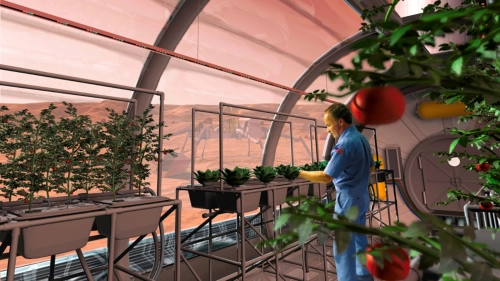NASA’s Deep Space Food Challenge is awarding $1 million to public members who can show inventive solutions to the challenge of feeding astronauts on long-term missions.
The Issue
Astronauts aboard the International Space Station (ISS) generally consume canned or dry meals from Earth on regular resupply flights.
Those flights aren’t inexpensive, but they’re straightforward since the ISS is just 250 miles from Earth.
Food delivery to humans on the moon (225,000 to 250,000 miles distant) or Mars (35.8 million to 250 million miles away) would be significantly more complex and costly, so it makes sense to consider how astronauts can generate at least part of what they’ll consume on-site.
On the other hand, NASA can’t exactly send humans to Mars with seed packs and best wishes.
Because of the planet’s low sunshine, high surface radiation, limited water supply, harsh temperatures, and other natural factors, we must rethink food production from the bottom up.
The General Idea
In January 2021, NASA announced Phase 1 of the Deep Space Food Challenge, inviting the public to submit ideas for feeding a crew of four on a three-year deep space mission.
It awarded a total of $450,000 to 18 U.S. teams for their concepts in October, and it is now launching Phase 2 of the competition.
This one will feature a $1 million prize pool, and teams must show a functional prototype of an off-world food production system and submit food for judging.
Registration is available until February 28, and teams who did not compete in Phase 1 may still compete in Phase 2.
Food Problem in a Bigger Context
NASA’s Deep Space Food Challenge isn’t only about future astronauts.
It is also hoped that the project would encourage innovation to feed everybody on Earth.
Jim Reuter, an associate administrator for NASA’s Space Technology Mission Directorate, said:
“Feeding astronauts over long periods within the constraints of space travel will require innovative solutions. Pushing the boundaries of food technology will keep future explorers healthy and could even help feed people here at home,” he continued.













Leave a Reply